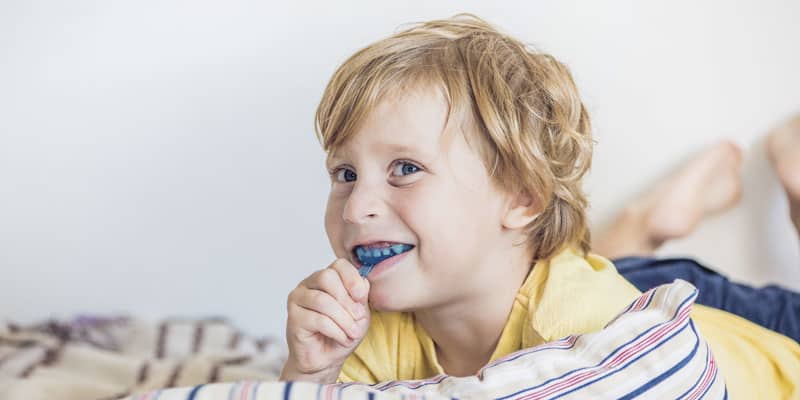Which one is the best?
Dr. Lauren Ballinger says that with all the different choices available for myofunctional orthodontic systems, there is no need for a one-size-fits-all approach.

Dr. Lauren Ballinger discusses the benefits of incorporating a myofunctional orthodontic system into your practice
I am frequently asked by colleagues interested in incorporating early airway-focused treatment into their practice, “Should I use Myobrace, Healthy Start, or some other myofunctional orthodontic ‘system?’” Nothing makes me happier or more excited for the future of our profession than knowing there are others wanting to learn how to treat littles with preventative dental sleep medicine.
Rather than giving my personal recommendation on a specific system, I believe the best answer is found by asking yourself more questions. Do you understand WHY myofunctional orthodontic systems (oral trainers and appliances) work? Do you know what the goals of treatment are for these systems? Which patients are good candidates for this treatment approach? Answering these questions requires use of your own brain, rather than relying on a branded message. If you are willing to lean-in to the details, then I think any of these systems can be an excellent match for select patients.
After you’ve mastered the system details, there are patient-centered questions. What are their concerns and fears? Their dental and health goals? In pediatrics, it’s important to bring the child into the conversation in an age-appropriate way. They are the ones treating themselves, after all. Getting them curious and excited goes a long way in gaining their trust, acceptance, and compliance.
Having an understanding of anatomy and physiology, craniofacial growth and development, how behaviors and compensations come into play, and what internal (body) and external (mind, environment) barriers your growing patient may face, are crucial to informing your treatment choices. Human variation requires more than one system, one appliance, one lab, or one treatment approach. The better you understand your patients, the more apparent it will become which “tool(s)” may be the most effective.
Understanding why they help is more important than which system to use.
I am partial to Myobrace because that is what I am familiar with and have been using for almost 7 years; I am a certified provider. I like that Myobrace has a strong myofunctional educational platform that works in conjunction with their oral appliances and trainers. If you understand the science behind myofunctional therapy and how the appliances/trainers function as adjuncts, then it really doesn’t matter what system you use. You can think through these cases yourself, choose cases wisely, and know how to troubleshoot. On the other hand, I believe some of the other systems, such as Heathy Start, offer more direct guidance with case selection and treatment. This has benefits, especially for those new to these treatment options. Understanding why these systems help our patients is more important than which system you use.
Simply stated, these systems work on habits and muscles, not the teeth. They are functional appliances that can lead to better health, and as a “side benefit” also make the teeth straighter. These systems work via normalizing oral muscle function by way of re-patterning and correcting para-functional/dysfunctional orofacial muscle habits and establishing nasal breathing day and night. The younger we initiate treatment, the better we can help children untangle their poor habits and “grow-out” of the suboptimal growth patterns that put them at risk for sleep breathing disorders, including sleep apnea. Tooth and bite relationships begin to correct when the underlying causes of malocclusion and poor craniofacial growth are treated, e.g., incorrect muscle function, poor oral rest posture, and nasal disuse. These goals are universal; patient improvement is not, and progress requires time and support. If nasal breathing is not achieved in the first months of treatment, you should figure out why. Is it a compliance issue? Is it a structural issue? Do they need a referral to an ENT or allergist?
Any of these systems can produce aligned teeth, well developed faces, and healthier airways. Nasal breathing reduces inflammation in the nasal and posterior airways and improves blood gas balance. Your patients learn to keep their lips gently together at rest with the tongue in a supportive position in the palate, facilitating development of the maxillary arch. The facial muscles no longer need to assist with swallowing, reducing forces that cause downward and backward growth of the jaws, narrowing of the posterior airway, and stress to the TMJ. Breathing is healthier and more efficient, restful sleep is more likely to be achieved, an overactive sympathetic nervous system begins to relax, pain patterns are reduced, and skeletal growth and dental development begin to normalize. The body returns to homeostasis. These appliances/trainers can also provide light forces that, in conjunction with improved muscle function, create some maxillary expansion and uprighting of mandibular teeth.
As impressive as the results can be, it is vital to understand the limitations of these systems. They are 100% reliant on patient compliance. Your job is to screen your patients, identify their goals for treatment, and offer a tool to help them. During therapy, our role is to monitor results and offer changes in course if the original treatment plan is not producing the desired outcome.
For example, while it is true that establishing nasal breathing can lead to reduced inflammation of the adenoids and/or tonsils, it is also true that they can be so obstructive that they are the barrier. In other words, can your patients breathe through their nose effectively and efficiently enough to be able to break through and find success in a myofunctional orthodontic program? Or are they stuck?
We want our patients to be successful and not get frustrated and give up. Sometimes, requiring a child to breathe through the nose, lips closed, with a rather large appliance in their mouth, is just too much to ask. Sometimes, it works like a charm. Recognizing the nuances and being able to think through WHY this treatment approach may be working well, or not so well, will produce clinical wisdom, improving your confidence. I cannot overstate the importance of remembering that every day a child is not breathing, sleeping, and growing well, is a day that they cannot get back. We must not waste precious time attempting to pound a square peg through a round hole. Change course if you need to. Adding a myofunctional component may be the key to making other therapies more successful.
Our young and growing patients who breathe through their nose both day and night, with harmony in their orofacial muscle function and proper oral rest posture, will grow-up healthier AND have better looking faces with straighter teeth. No matter which myofunctional orthodontic system(s) you use, as long as you understand WHY they work, choose your cases wisely, know what the potential barriers to treatment may be, when to refer for collaborative care, and that there is no such thing as a one-size-fits-all approach, then you can make a huge difference in a child’s life. AND have fun doing it.
 Lauren Ballinger, DDS, is a board-certified pediatric dentist and a specialist in orofacial myology. She practices pediatric airway-focused dentistry in Western Massachusetts and is the founder of Good to Grow: Pediatric Dental Wellness, Airway, Grow and Sleep Solutions and The Nurture Frenectomy Center. Dr. Lauren founded The Endeavor Group: a global assembly of passionate health professionals promoting awareness of, and solutions for, optimal breathing and airway health for children under age 6. She is also the pediatric dental chapter leader for the AAPMD. Dr. Ballinger is a featured faculty member in The Pankey Institute’s Dental Sleep Medicine program, focusing on preventive dental sleep medicine for the pediatric dental population. She is forever grateful to her own children, Jack and Libby, who ignited her passion and motivated her pursuit of knowledge.
Lauren Ballinger, DDS, is a board-certified pediatric dentist and a specialist in orofacial myology. She practices pediatric airway-focused dentistry in Western Massachusetts and is the founder of Good to Grow: Pediatric Dental Wellness, Airway, Grow and Sleep Solutions and The Nurture Frenectomy Center. Dr. Lauren founded The Endeavor Group: a global assembly of passionate health professionals promoting awareness of, and solutions for, optimal breathing and airway health for children under age 6. She is also the pediatric dental chapter leader for the AAPMD. Dr. Ballinger is a featured faculty member in The Pankey Institute’s Dental Sleep Medicine program, focusing on preventive dental sleep medicine for the pediatric dental population. She is forever grateful to her own children, Jack and Libby, who ignited her passion and motivated her pursuit of knowledge.
Robyn Merkel-Walsh discusses how myofunctional therapy can benefit children in airway, feeding, structure, and speech in our sister publication, Dental Sleep Practice. https://dentalsleeppractice.com/pediatric-orofacial-myofunctional-therapy-the-four-myo-domains/
